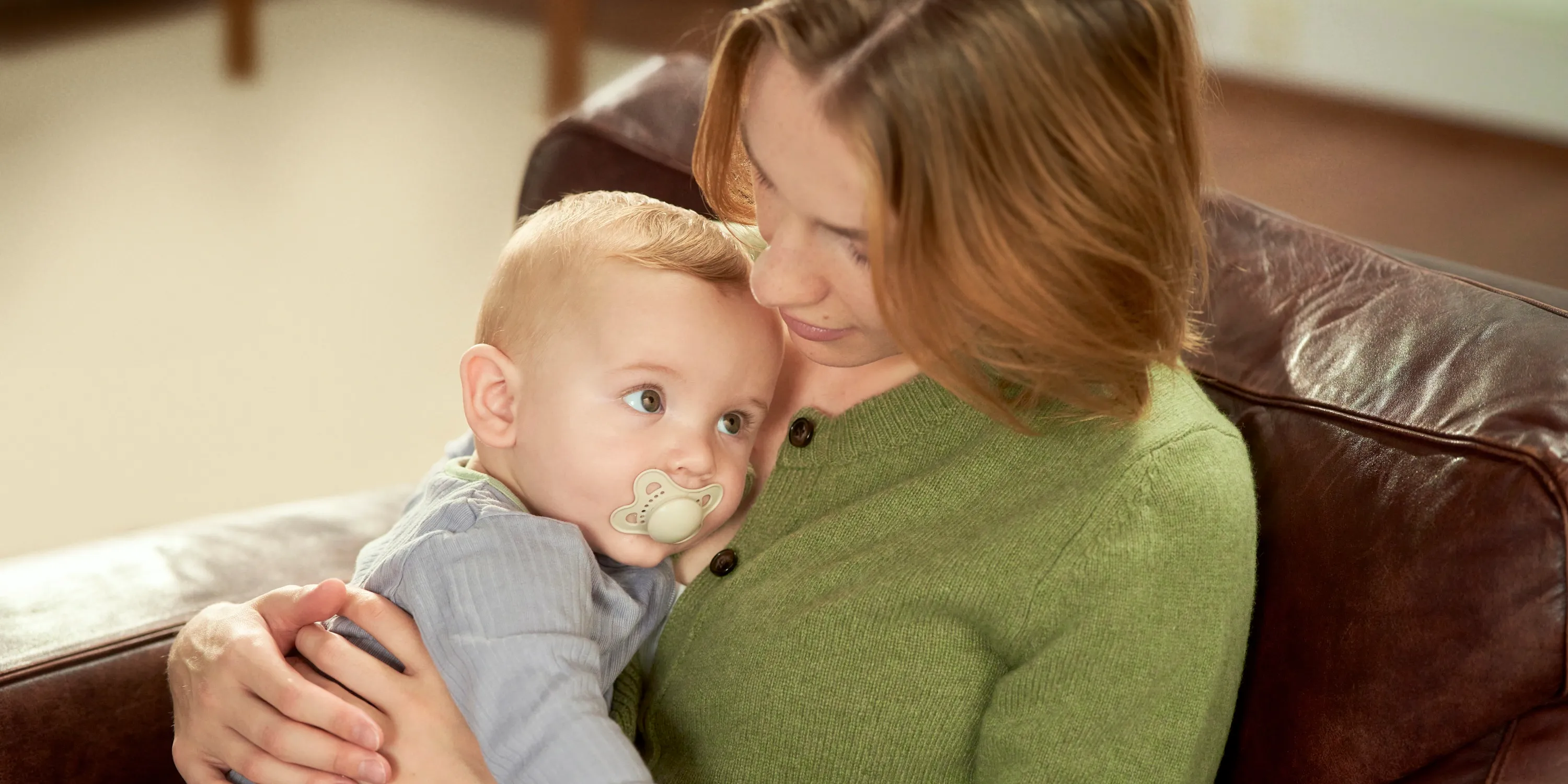
Soothers Make a Difference:
Supporting Baby's Emotions an Strengthening Your Bond
based on the scientific study: "The who, when, and why of pacifier use." by Mitev, K., Frewin, K. L., Augustinova, M., Niedenthal, P. M., Rychlowska, M., Vanderwert, R. E. (2024)
A new study reveals that soothers aren’t just calming for babies, they can also support parents in feeling more in sync with their little ones through the early stages of life together.
The first months of parenting come with plenty of learning curves. You're getting to know your baby, building routines, and figuring out how to respond to their needs. In these moments, something as simple as a soother can bring stability, not just to your baby’s emotions, but to your experience as a parent.
In a recent UK-based study, more than 400 mothers of babies and toddlers (aged 0 to 36 months) shared their experiences with soother use. The results showed that babies who used soothers showed fewer signs of negative emotions, such as fussiness or frustration. Parents also described feeling more in tune with their child and noted that their relationship felt more balanced.
More than half of those surveyed said they used a soother regularly, usually at bedtime or when their child needed reassurance. Around one-third gave their child a soother more than three times a day. Interestingly, most made this choice independently. Only 10% said their healthcare provider recommended it, and 62% reported receiving no guidance at all. This suggests that many parents are relying on their instincts to find what works best for their baby.
Soothers also seemed to play a role in easing daily interactions. Parents who used them reported fewer tense moments and found bonding and caregiving flowed more smoothly. Babies appeared more relaxed overall which is an emotional benefit that can have ripple effects across family life.
When it comes to introducing a soother to your baby, it’s important to wait until breastfeeding is well established (usually around 4–6 weeks).This helps avoid any impact on milk supply or feeding cues.
Of course, every baby is different, and while soothers can be helpful in early childhood, the NHS recommends starting to reduce usage from around 6 months and ideally fully weaning by 12 months. This is primarily to support healthy dental and speech development.
For children especially attached to their soother, a gradual approach, such as only giving them at sleep times, can make the transition easier.
This study supports what we at MAM have known for a while, that a soother can be more than just a tool to calm a baby. It can create space for gentler, more connected moments and help foster emotional wellbeing for the whole family.
Because when a baby is born, a parent is born too, and finding what brings balance to both can make all the difference.
Reference:
Mitev, K. et al. (2024). The who, when, and why of pacifier use. Pediatric Research. DOI: 10.1038/s41390-024-03540-6
